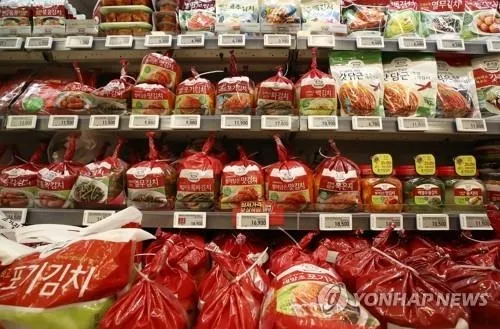Did South Korea's Exports of Food and Agro Products Reach a Record High?

Synopsis
Key Takeaways
- Record high of $6.67 billion in agricultural and food exports
- 24% increase in instant noodle exports
- Strong demand in North America and the EU
- Collaborative efforts between the government and exporters
- Aiming for $14 billion in exports this year
Seoul, July 3 (NationPress) South Korea's exports of agricultural and food products have soared to an unprecedented level in the first half of the year, driven by the increasing global admiration for Korean culture, as reported by the Ministry of Agriculture on Thursday.
The total value of agricultural and food exports reached $6.67 billion from January to June, reflecting a 7.1 percent increase from $6.22 billion during the same period last year, according to the Ministry of Agriculture, Food and Rural Affairs, as cited by Yonhap news agency.
This achievement marks the highest export figure for the first half of the year ever recorded, the ministry further stated.
In terms of specific products, exports of instant noodles, known as ramyeon in Korean, surged by 24 percent year-on-year, amounting to $731.7 million. Additionally, exports of sauce products increased by 18.4 percent to $228.4 million, while ice cream exports jumped by 23.1 percent to $65.5 million.
Chicken meat exports also saw a 7.9 percent expansion, totaling $45.6 million, attributed to the rising demand for frozen chicken and Korean ginseng chicken soup in the United States, according to the ministry.
Furthermore, exports of farm machinery, veterinary pharmaceuticals, agricultural chemicals, and other related products rose 3.1 percent year-on-year to reach $1.5 billion during the same timeframe.
Regionally, exports of Korean food items to North America surged by 24.3 percent to $1.03 billion, while exports to the European Union and Britain grew 23.9 percent to $421.8 million.
Shipments to the Gulf Cooperation Council (GCC) nations, including Saudi Arabia and the United Arab Emirates, increased by 17.8 percent to $182.6 million. Meanwhile, exports to the Commonwealth of Independent States and Mongolia climbed by 9 percent to $243.1 million.
"Despite facing challenges in global trade, such as U.S. tariffs and fluctuations in foreign exchange rates, the ongoing growth of Korea's food and agricultural exports is attributed to the collaborative efforts of export companies and the government," stated Agriculture Minister Song Mi-ryung in a press release.
Song expressed that the government is committed to implementing further measures to enhance exports of Korean food and agricultural products, aiming for an annual export target of $14 billion this year.









